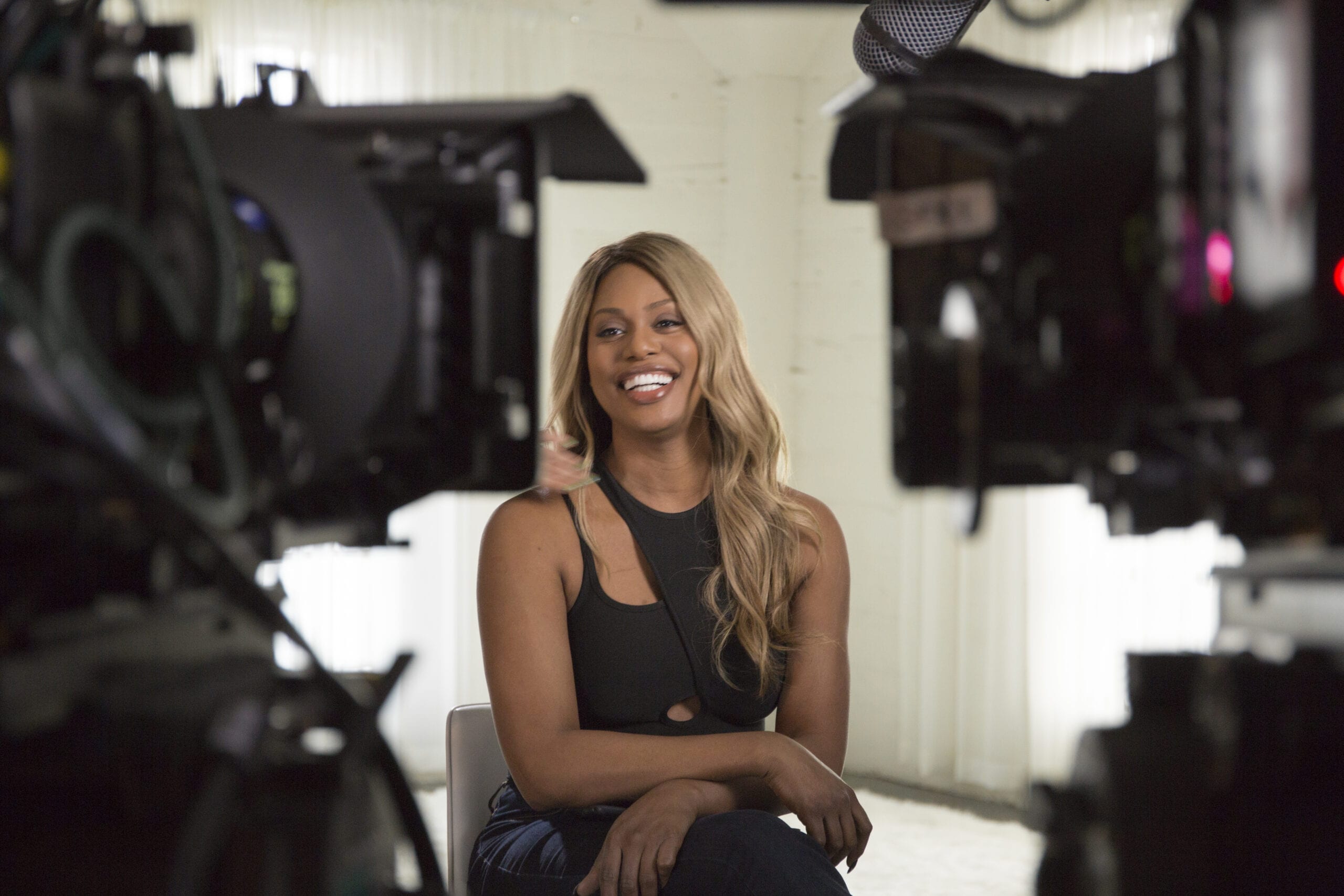I learned at an early age the important difference between “talking the talk” and “walking the walk.” Anyone can be a talker, using their tongue to utter words of some sort of significance. But not everyone is a walker, someone who puts action behind their words. On the heels of yet another #OscarsSoWhite controversy and a continued lack of authentic queer and trans storytelling, it’s increasingly clear that Tinseltown needs more walkers and less talkers when it comes to diversity. Enter Sam Feder and Amy Scholder, the respective director and producer of Disclosure: Trans Lives on Screen, a documentary that premiered this past Monday at the Sundance Film Festival featuring an almost entirely trans cast of commentators and crew. “I knew from the beginning that it would only be trans people on camera and that I wanted to include as many trans people as possible behind the camera,” says Feder, who has spent the last 17 years making films about his people. “It was a no-brainer that if you’re telling a history of a community, it should only be that community that tells it, as we are the experts of our own lives.” Such an approach to filmmaking, one that is truly “for us, by us,” is radical in a day and age when the broader industry still struggles with what it means to meaningfully include marginalized folks in the telling of our stories. But together, Feder and Scholder serve as prototypes for creators interested in telling LGBTQ2 stories and moving the industry forward. Disclosure is an unprecedented look at trans representation in film and television since the beginning of moving images. Through interviews with leading trans creatives and thinkers, including actress Laverne Cox (who is also an executive producer), The Matrix franchise co-creator Lilly Wachowski, Oscar-nominated director Yance Ford, Pose’s Mj Rodriguez and Chaz Bono, son of Sonny and Cher—and yours truly!—the documentary reveals how Hollywood both reflects and manufactures our deepest anxieties about gender. It charts our community’s mixed feelings about a history of representation that is both celebratory and dehumanizing.
Disclosure is an unprecedented look at trans representation in film and television since the beginning of moving images.
Feder and Scholder first connected while Feder was working on his last film, 2014’s Kate Bornstein is a Queer and Pleasant Danger, a doc about the legendary author, performance artist and gender theorist Kate Bornstein. Scholder attended a friends-and-family screening of the picture, as she’s close with Bornstein. “I was really curious to see who would be able to do her justice,” she says. “So I went in with a little bit of a hairy eyeball to see this movie about Kate, and I really loved it,” Scholder says. “I really felt that Sam had a beautiful way of representing Kate and her impact and letting her speak for herself and not be spoken of by others.” About a year later, Scholder was invited to curate a program for Los Angeles’s Hammer Museum where she screened Feder’s film. From there, the pair developed a working relationship and when she heard of his intention to make a new film about Hollywood, she was intrigued from the beginning. Feder started the four-year process by doing research interviews with other trans people. His goal was to make an all-trans The Celluloid Closet, the book and documentary about queer representation in Hollywood, with as many trans people involved in the production as possible. He wanted every face in the documentary and every person on the crew to be a person of trans experience. “We knew it wouldn’t be easy to staff, but I spent months and months and months and months [finding people],” Feder says. He notes how Hollywood loves to say they can’t find people of diverse backgrounds and underrepresented communities to include in their productions, either on screen or behind the camera. “People might not be familiar with this thing called Google that really helps,” he says. “You just cast a really, really wide net and it took a long time, but it certainly can be done. When I hear people in the industry say they don’t know how to do it, they don’t want to do it.”

Sam Feder, director of 'Disclosure: Trans Lives on Screen.' Credit: Courtesy Texas Isaiah
And where a trans person could not be located to serve in a certain capacity behind the scenes, a non-trans person was hired but was required to also mentor and train a trans or gender nonconforming person in the role. “It was a unique production model and I knew that the process of making the film was going to be as important as the film itself,” Scholder says. “I believe that if the process is in tune with the vision of what you want the outcome to be, you’re much more likely to get there, you’re much more likely to have success.” I got my request to participate in Disclosure while I was still working at the Los Angeles Times, covering diversity in Hollywood with a focus on Black and queer film. Intrigued by the idea that Feder intended to not only have exclusively trans people telling our history and to pay all those interviewed, crediting us as creative consultants, I knew I had to be involved. Per Times company policy, I couldn’t accept the money (instead, donating it back to the production), but it was clear to me that Feder was on to something. Disclosure is building on the groundbreaking work of Jill Soloway’s Transparent, which also made efforts to hire trans people at every level of production through a “transfirmative action program” with the help of producers Zackary Drucker and Rhys Ernst. But that was a studio-backed project and its lead actor was still a cishet man playing a trans woman. With Disclosure being an independent venture, the resources were more finite and it required more effort. Nonetheless, now that it’s been done on both the indie and major production level, Hollywood has no more excuses not to hire trans people to tell trans (and non-trans) stories; there is literally a blueprint. “The people are out there and it just takes a little work, but now it doesn’t take as much work because I have all those resumés that I can hand over to people if they’re looking,” Feder says. This is how true change comes about. This is what meaningful inclusion looks like. And just in case it’s still not clear what I’m saying, let me put a point on it: Nothing about us without us!


 Why you can trust Xtra
Why you can trust Xtra


